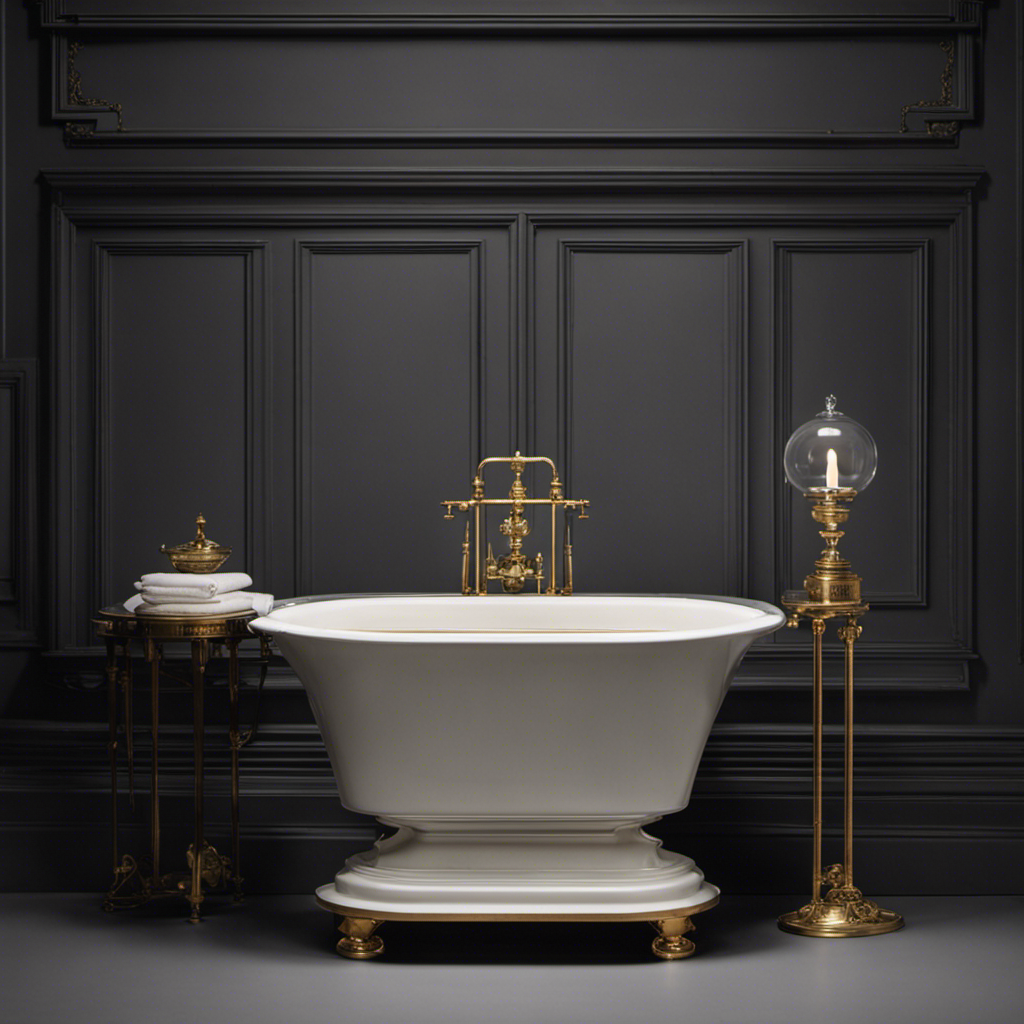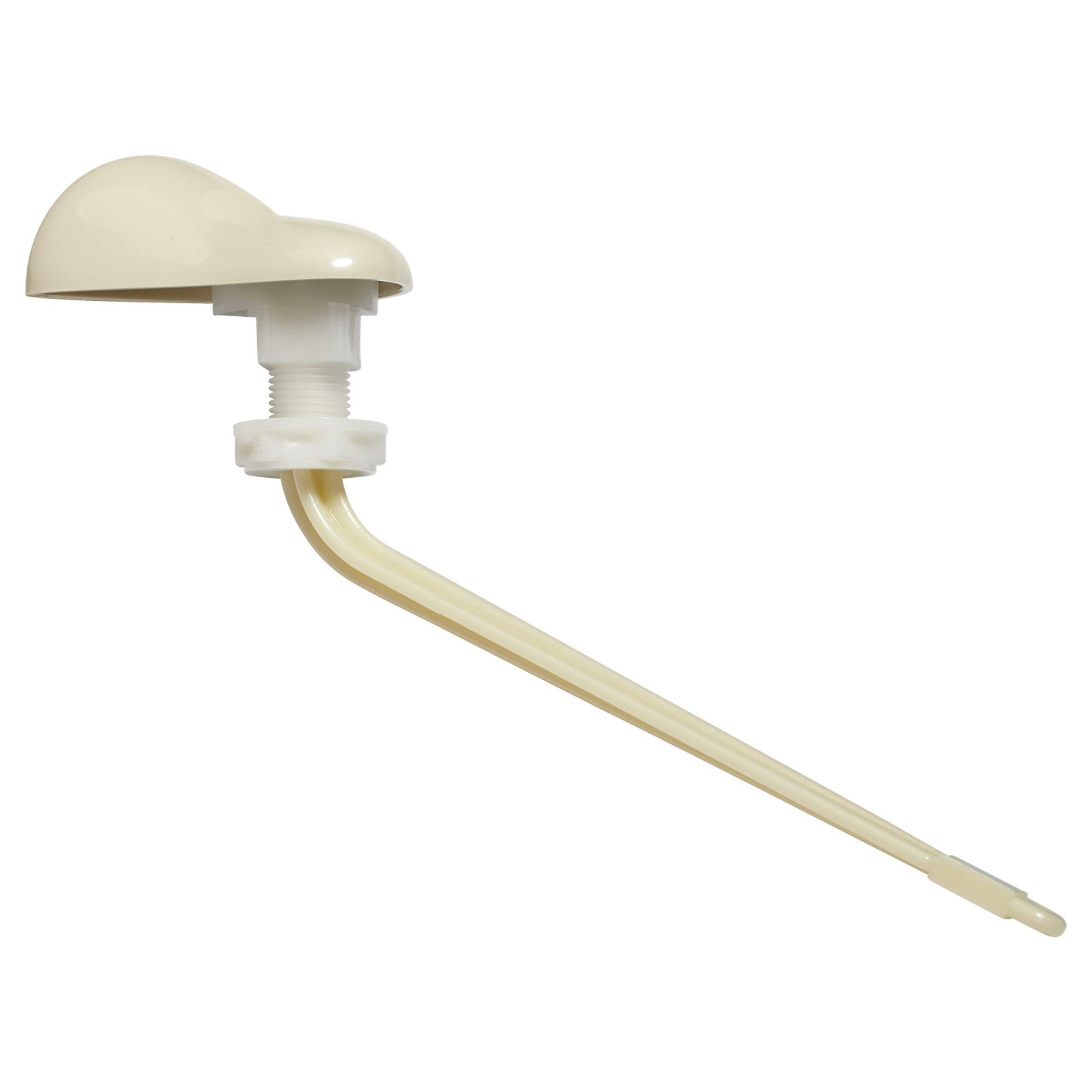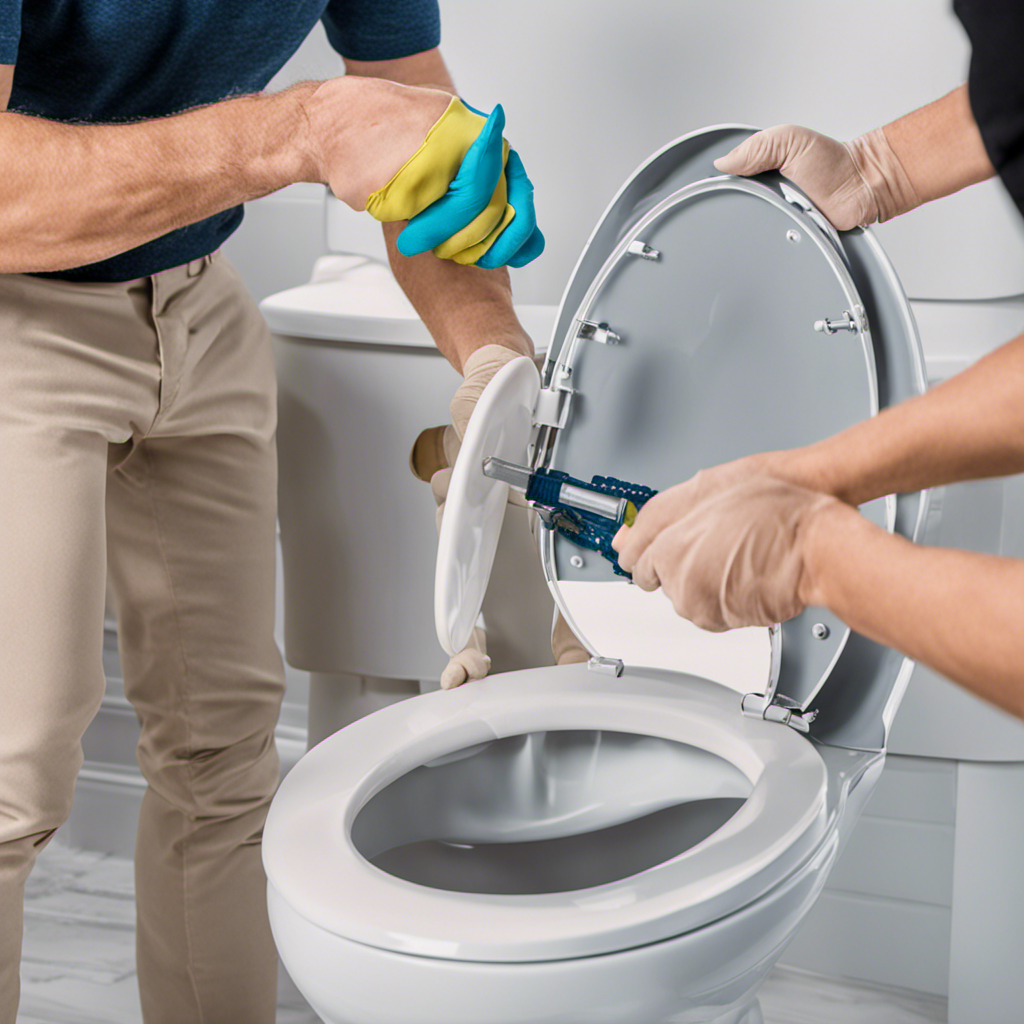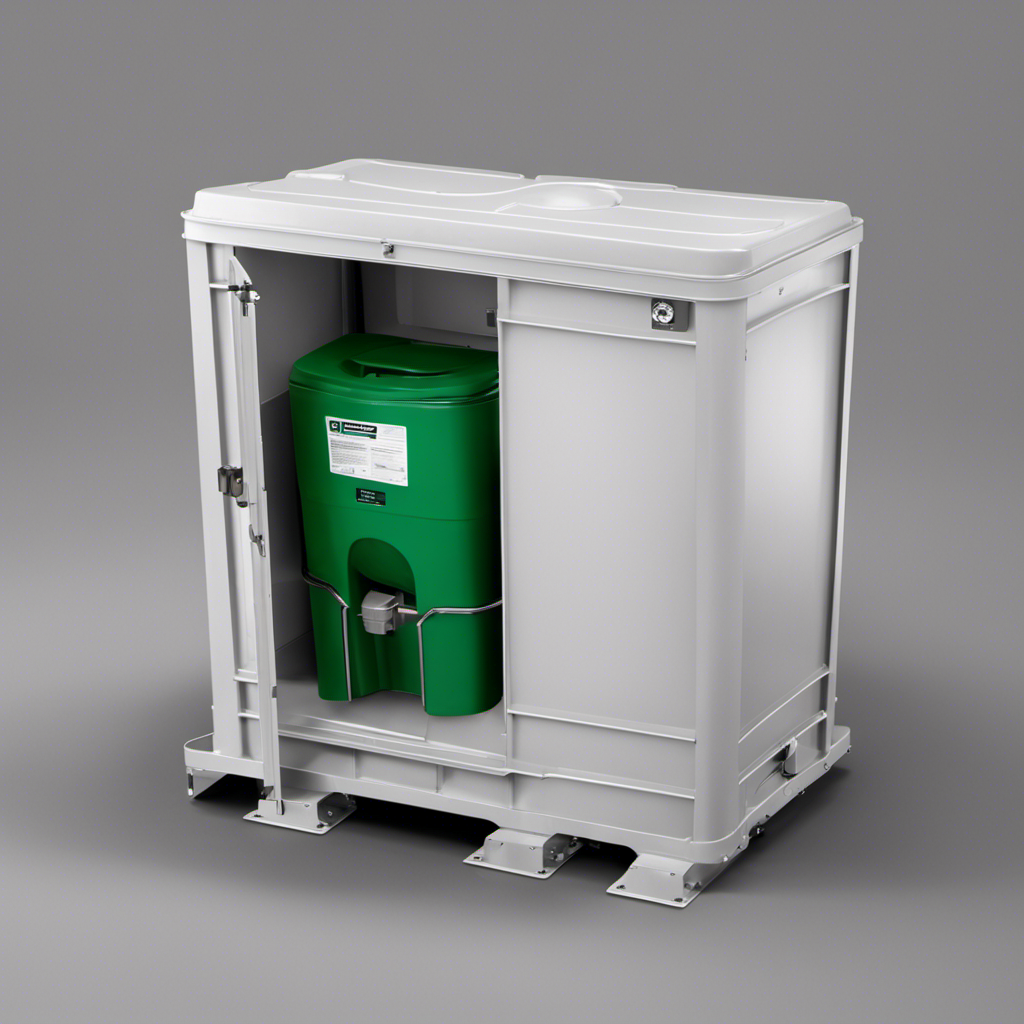Imagine you’re sitting on the porcelain throne, wondering when this ingenious invention first came into existence. Well, let me tell you, the history of the toilet is as intriguing as it is necessary.
In this article, we will delve into the depths of time to uncover the answer to that burning question: what year was the toilet invented? From ancient flush toilets to modern advancements, we’ll explore the fascinating evolution of this essential fixture.
So, prepare to be amazed by the wonders of sanitation history!
Key Takeaways
- Ancient Egyptians and Romans had early versions of toilets connected to sewage systems.
- Medieval innovations in sanitation improved public health and hygiene.
- Modern flush toilets have evolved for maximum efficiency and comfort.
- Advances in toilet technology, such as waterless toilets and smart toilets, have revolutionized daily bathroom routines.
Early Sanitation Practices
Early sanitation practices involved the use of chamber pots and outdoor latrines.
Sanitation in ancient civilizations varied depending on the culture and time period. In ancient Egypt, for example, toilets were simple benches with holes that led to a sewage system.
The Indus Valley Civilization also had advanced sanitation systems, with houses having private bathrooms connected to a complex underground sewage network.
The ancient Romans took sanitation to another level with their sophisticated public toilets, which were often communal spaces with multiple seats and flowing water.
The evolution of toilet designs throughout history showcases the importance civilizations placed on cleanliness and hygiene. From basic chamber pots to complex sewage systems, these early sanitation practices paved the way for the development of modern toilets that we use today.
Ancient Flush Toilets
If you’re curious about ancient flush toilets, you’ll be fascinated by their sophisticated water management systems. Ancient plumbing systems were surprisingly advanced, especially considering the time period in which they were developed.
The ancient Romans, for example, had a complex sewage system that included underground drains and public toilets connected to a network of water channels. These toilets used water to flush waste away, similar to modern flush toilets.
In ancient Egypt, the wealthy had access to more luxurious bathrooms with flushing toilets that used a combination of gravity and water flow to remove waste. These ancient plumbing systems demonstrate the ingenuity and resourcefulness of our ancestors when it came to dealing with their bathroom habits.
As we move forward in history, we will explore the medieval innovations in sanitation that improved upon these ancient techniques.
Medieval Innovations
As you explore medieval innovations in sanitation, you’ll discover the ingenious techniques developed to improve upon ancient plumbing systems.
During this time period, sanitation methods and hygiene practices were of utmost importance due to the spread of diseases and the need for proper waste disposal.
One significant advancement was the development of underground sewage systems in cities. These systems allowed for the efficient removal of waste, reducing the risk of contamination and disease.
Another notable innovation was the construction of public bathhouses. These bathhouses provided individuals with access to clean water for bathing and improved personal hygiene.
Additionally, medieval societies implemented strict regulations regarding waste disposal, with laws requiring the proper disposal of waste and the maintenance of clean living environments.
These advancements in sanitation greatly contributed to improved public health and hygiene practices during the medieval era.
The Modern Flush Toilet
When you use a modern flush toilet, you’ll see how it efficiently removes waste and provides a hygienic solution for waste disposal. The design of modern toilets has evolved over the years to ensure maximum efficiency and comfort.
Here are three ways modern toilet design and the toilet manufacturing process have improved:
-
Water-saving features: Modern toilets are designed to use less water per flush, reducing water consumption and promoting sustainability.
-
Advanced flushing mechanisms: The manufacturing process incorporates advanced flushing mechanisms, such as pressure-assisted or dual-flush systems, which ensure effective waste removal with minimal water usage.
-
Enhanced hygiene features: Many modern toilets come with features like self-cleaning surfaces, touchless flush, and built-in bidets, enhancing hygiene and reducing the need for additional cleaning.
These advancements in toilet technology have revolutionized the way we interact with and benefit from this essential fixture in our daily lives.
Advances in Toilet Technology
The advancements in toilet technology have greatly improved the efficiency and hygiene of modern flush toilets. From waterless toilets to smart toilets, innovations in this field have revolutionized the way we approach our daily bathroom routines. Waterless toilets, also known as dry toilets, are designed to operate without the need for water. These eco-friendly alternatives are particularly beneficial in areas with limited water resources or in off-grid locations. Smart toilets, on the other hand, are equipped with various high-tech features such as motion sensors, automated flushing, heated seats, and even built-in bidets. These intelligent systems not only enhance user comfort but also promote better hygiene and reduce water consumption. With the continuous advancement in toilet technology, we can expect even more innovative and sustainable solutions in the future.
| Advancements | Description | Benefits |
|---|---|---|
| Waterless toilets | Operate without using water | Conserves water resources, suitable for off-grid locations |
| Smart toilets | Equipped with high-tech features | Enhanced user comfort, improved hygiene, reduced water consumption |
Conclusion
So, there you have it! After delving into the history of toilets, it is evident that the modern flush toilet, as we know it today, was not invented until the late 19th century.
Throughout history, various civilizations and cultures have developed their own versions of toilets and sanitation practices, but it was not until the advancements in plumbing and sanitation systems that the modern flush toilet became a widespread and essential fixture in households worldwide.
The evidence supports the theory that the toilet was not invented until the late 1800s, revolutionizing our sanitary practices and improving public health.










